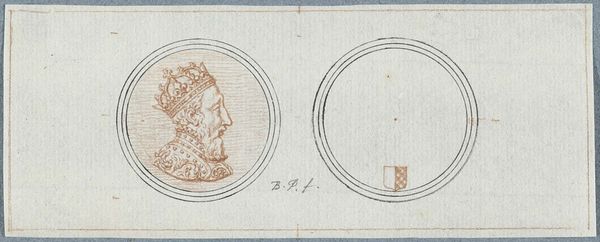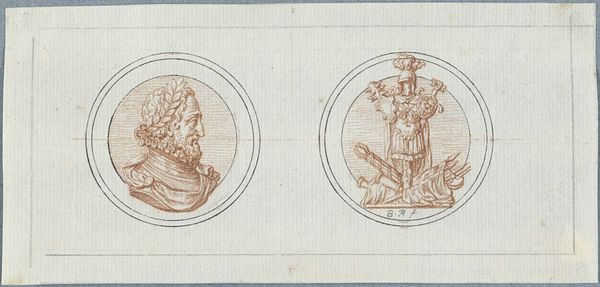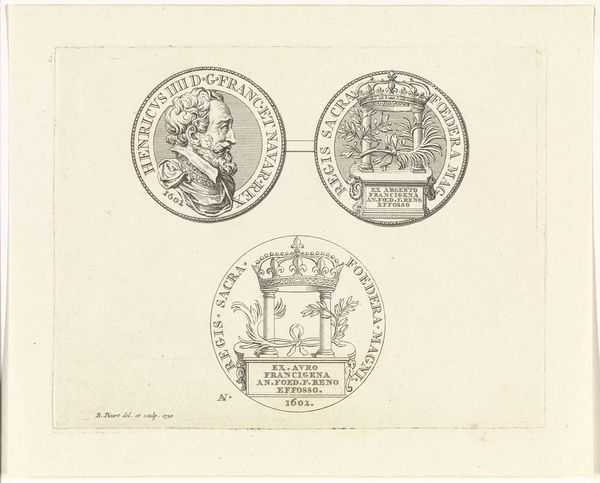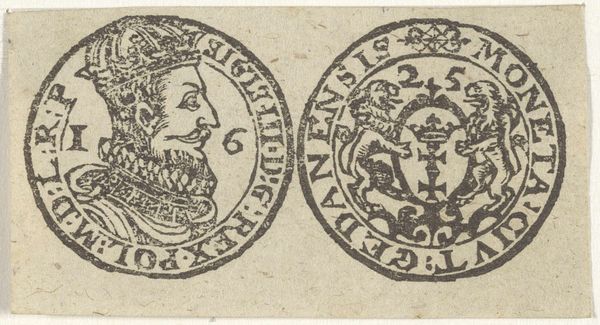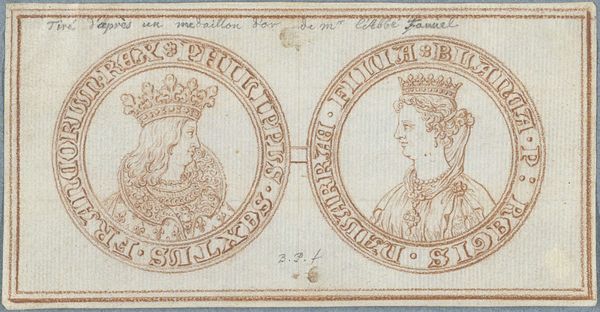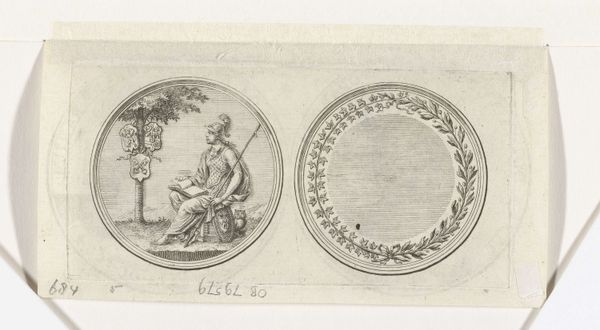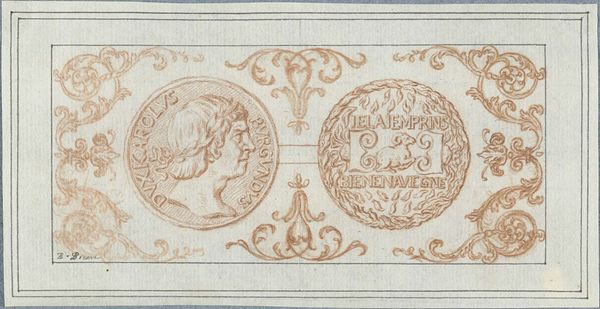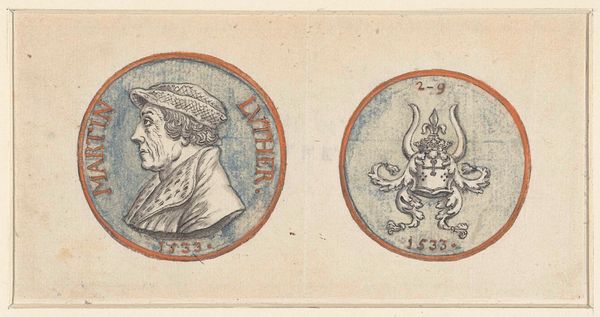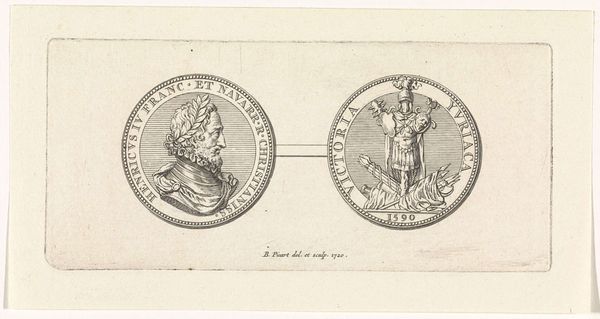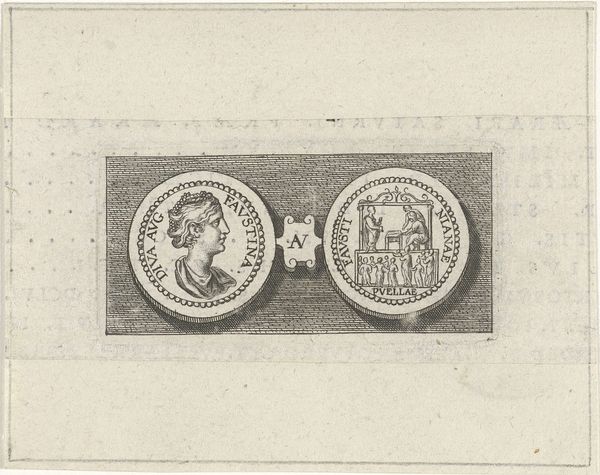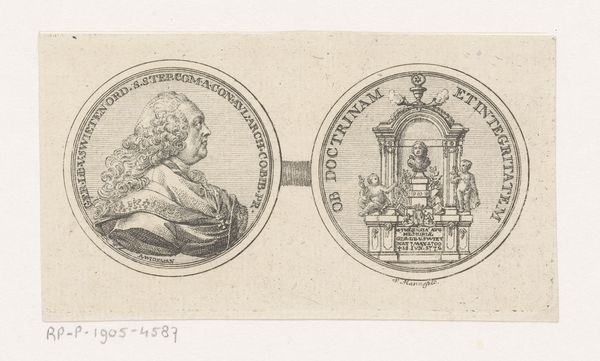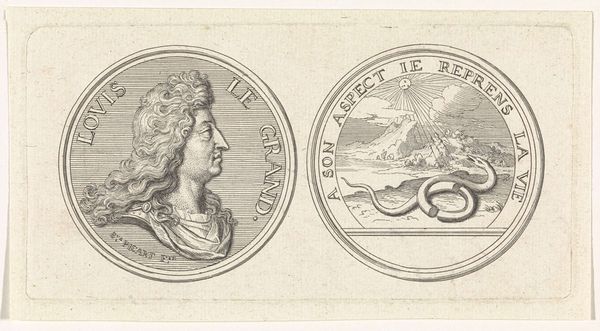
Voor- en achterzijde van een penning met portret van Karel X, koning van Frankrijk 1683 - 1733
0:00
0:00
bernardpicart
Rijksmuseum
drawing, print, engraving
#
drawing
# print
#
form
#
line
#
history-painting
#
engraving
Dimensions: height 63 mm, width 135 mm
Copyright: Rijks Museum: Open Domain
Curator: This engaging engraving, titled "Voor- en achterzijde van een penning met portret van Karel X, koning van Frankrijk" by Bernard Picart, captures both sides of a commemorative coin. It's from around 1683-1733 and currently held at the Rijksmuseum. Editor: Immediately, the line work strikes me. It's delicate but definite. The monochrome reddish brown gives a warm, classical feeling, yet the king looks rather stern. Curator: Well, engraving relies heavily on line; the precision and detail come from the artisan's hand. Picart was celebrated for his skill with copperplate engravings, a meticulous and laborious process, essential for mass producing images. It's this element of reproduction I'd like to emphasize, the mechanics that underpin the spread of ideology. Editor: Ideology absolutely, but whose ideology? This image certainly seeks to portray the power and legitimacy of Charles X. We see a very intentional display of monarchical authority in both the profile of the king, his features exaggerated perhaps, and that striking crown. How do you see it functioning in society at that time? Curator: Printed images such as this one acted as propaganda tools. Consider the skill, the labor hours embedded in producing a matrix that would eventually find mass distribution, cementing this particular vision of Charles X. Think about what his reign signifies given shifting global politics, the cost of raw materials to produce these images and the hands that labored on this drawing. Editor: The coin imagery also situates the king within a longer lineage of power and nobility, an unbroken historical narrative. It's really intriguing to me how this form, traditionally a mark of exchange value, transforms into an exchange of symbolic power, reflecting gender roles, politics, and more in his French milieu. It offers a lens onto social dynamics. Curator: Absolutely, let’s also appreciate the subtle artistry and consider the artist's place as an active constructor within these cultural representations and how it later can shape views. Editor: Examining these two circular sides gives insights on power and symbolic representation; it serves to challenge traditional power dynamics. Thank you!
Comments
No comments
Be the first to comment and join the conversation on the ultimate creative platform.

